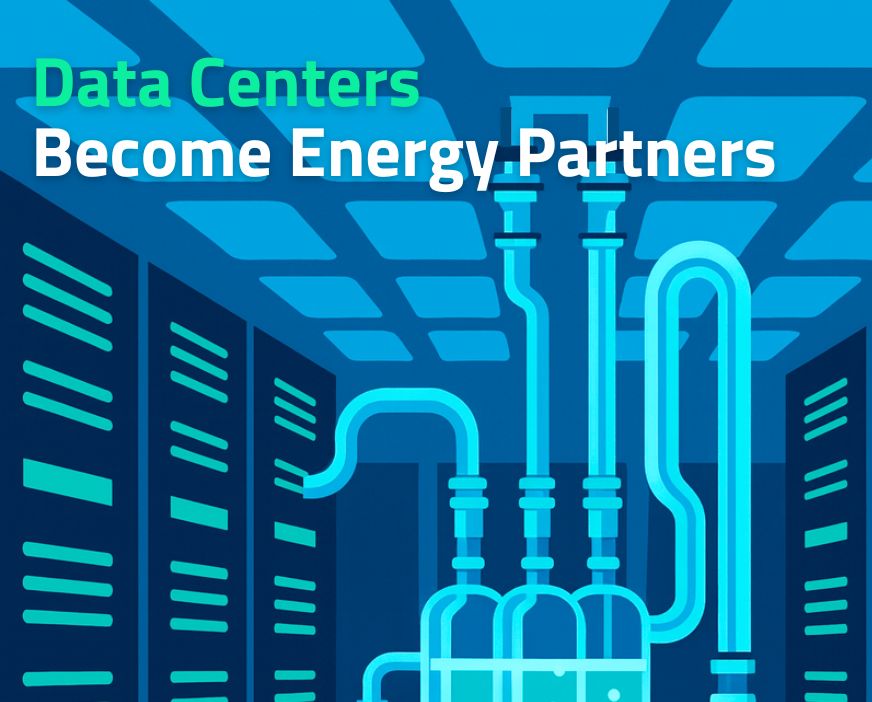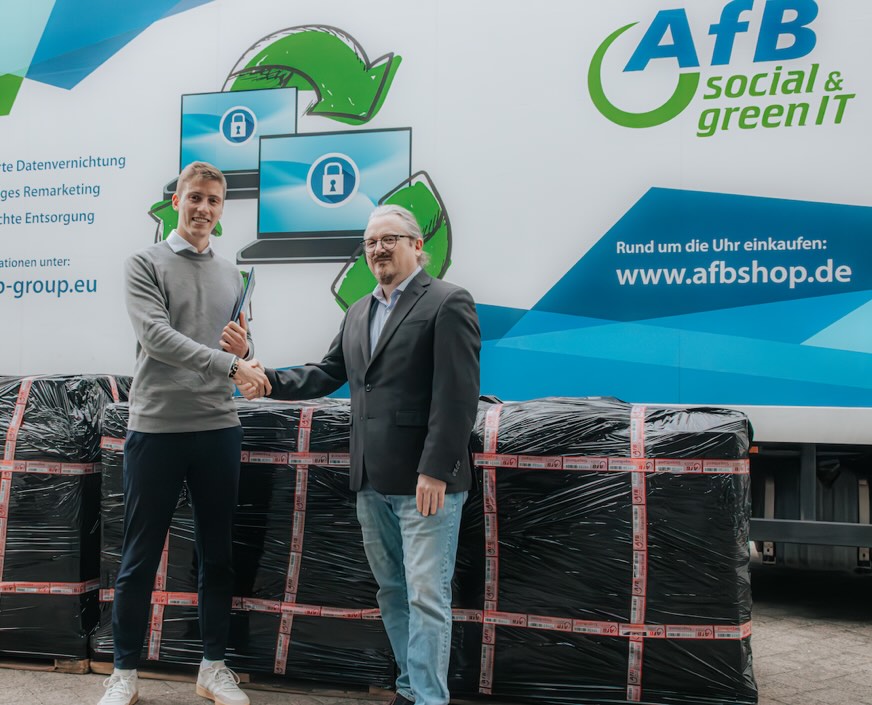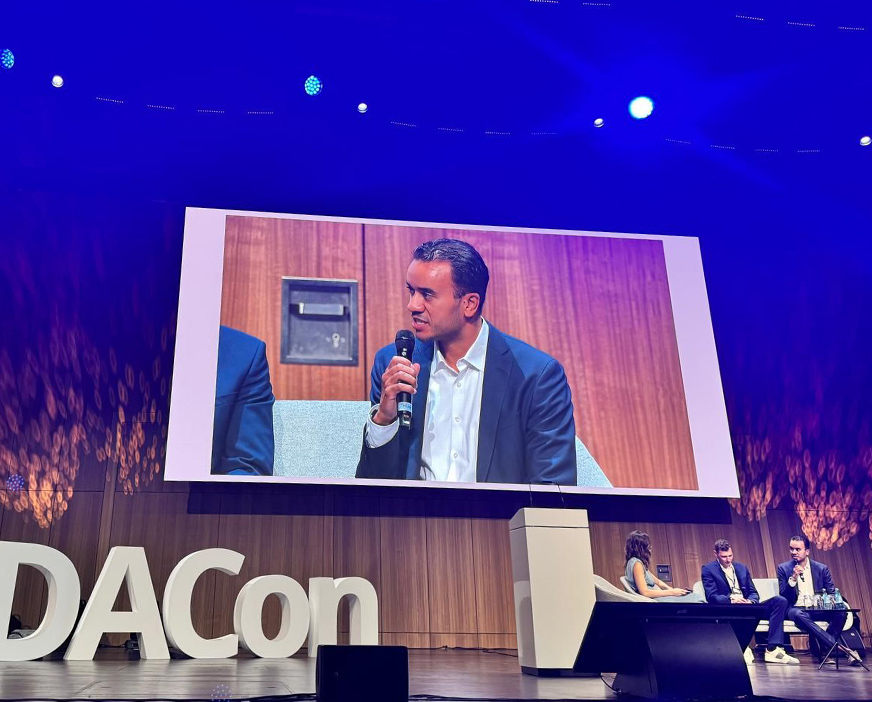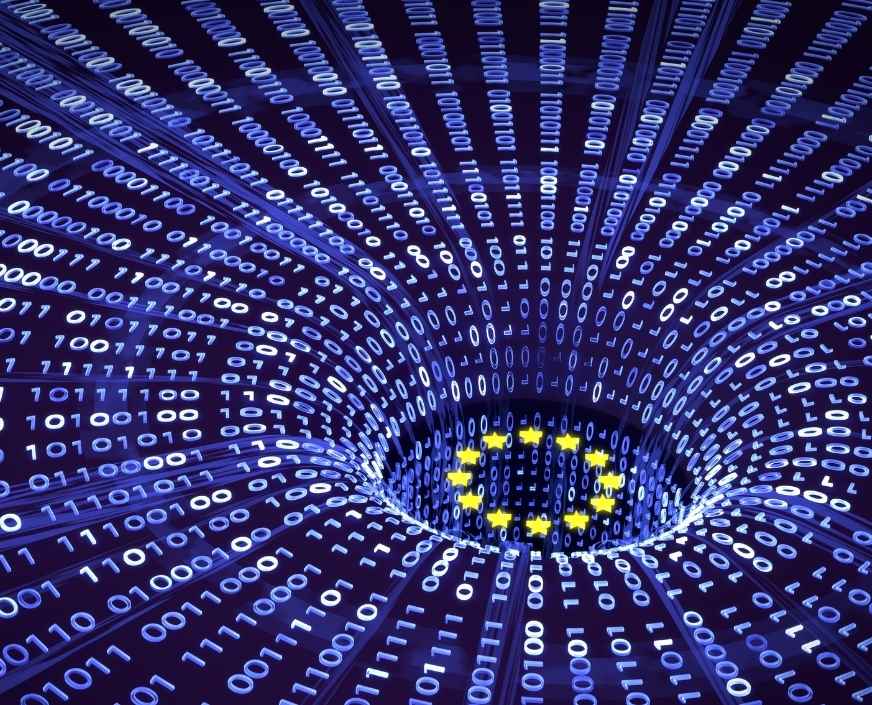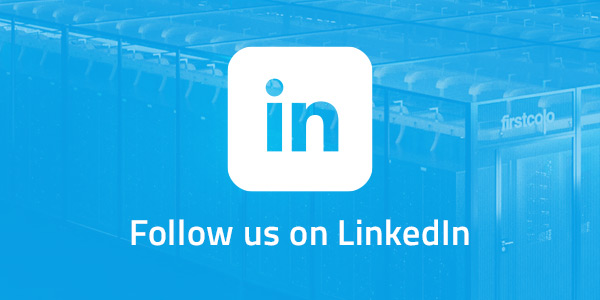Efficient Data Centers Thanks to Sustainable IT
According to a current Bitkom study, 45% of data center capacities in Germany were used for cloud applications in the past year alone. It quickly becomes clear: The massive increase in cloud computing capacities is, alongside artificial intelligence (AI), a central growth driver for the data center market. However, with technological possibilities, the energy demand of data centers is also rising rapidly: According to the study, an energy demand of nearly 20 billion kWh is expected in German data centers for the year 2024. By 2030, this number is likely to increase to around 30 billion kWh. The experts from PWC note that already today about 1.5 percent of global energy consumption is attributed to the data center industry.
The good news: Through more efficient server hardware and the use of modern air conditioning technologies, data centers can be operated significantly more energy-efficiently. This benefits the environment and, in some cases, massively reduces costs.
How Does a Data Center Become a Green Data Center?
Experts refer to Green Data Centers. These data centers are characterized by largely relying on renewably generated electricity, investing in intelligent heat recovery, and using virtualization technologies. This allows for a much more flexible use of physical IT resources. Data centers no longer need to maintain a dedicated server per customer that is underutilized most of the time. Instead, IT resources in the cloud data center are distributed among various customers, optimizing the utilization of each individual hardware component. What is not needed is automatically shut down. Various providers, including TÜV Rheinland and Blue Angel, offer corresponding certification options for Green Data Centers.
Good to know: Green Data Centers are in line with the Energy Efficiency Act (EnEfG). According to this, data centers are obligated to cover their electricity consumption 100% through electricity from renewable energies on a balance sheet basis starting from January 1, 2027.
Energy Audit Determines the Status Quo
Energy efficiency, resource conservation, and reduction of CO2 emissions – the goals are clearly defined. But what’s next? Before companies can adopt a suitable method for saving energy, an analysis of the energy consumption of all devices in the data center must first be conducted. Because those who want to set up their IT in a contemporary and resource-efficient manner need valid and reliable measurements. Experts refer to this as an energy audit.
The initial focus is on the question of where there is potential for improvement. For an objective representation of energy and resource requirements, it makes sense to first record and archive the most important consumption data. Based on the data series obtained, it can then be deduced where there are potential savings.
In this context, it is important to not only record the energy consumption of IT but also the secondary drivers – above all, air conditioning, which is an indispensable prerequisite for the highly available operation of IT infrastructures. Moreover, there are usually redundancies, up to the complete overload of supply, distribution, and cooling systems. These overcapacities – especially in UPS systems – operate far away from their optimal operating point in the nominal load range during normal operation.
Air Conditioning Technology as a Central Energy Consumer – This is What Green Data Centers Change
Usually, the biggest adjustment for increased efficiency lies in optimized air conditioning of server rooms. There are several approaches that Green Datacenters consider: A simple measure is the strict separation of cold and warm air, as it improves air circulation in the data center. This minimizes the speed of the recirculating air coolers, which saves electricity. Warm air is drawn in, cooled, and supplied to the cold aisle at the appropriate temperature.
Another measure is raising the room temperature or supply air temperature in the cold aisle of the data center. This approach reduces the time for forced cooling and extends the time for free cooling using ambient air. Against this background, it is not surprising that many cloud providers now operate their data centers in northern and cooler regions like the Scandinavian countries, as they do not need forced cooling here. But even in Germany, the climate during the cold season temporarily allows operation without compressor power in the climate cabinets.
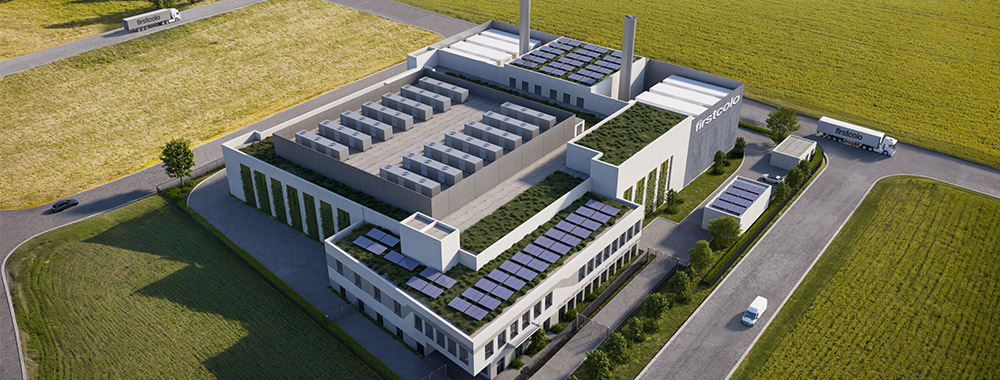
Cloud and Sustainability – A Contradiction?
With flexible and scalable Cloud-Services, companies can quickly react to changing requirements. Of course, cloud data centers also consume energy, but leading cloud providers typically rely on modern, energy-saving systems and IT components as well as optimized cooling.
In contrast, the in-house operated data centers of many German companies work with partly outdated hardware and thus have a high PUE value. This indicates how effectively data centers use the energy supplied. However, modernizations are difficult – and above all, cost-intensive.
According to PWC, switching to cloud computing can help companies break free from the proverbial cost trap of their data centers – as they no longer have to continuously invest in infrastructure, hardware, and skilled personnel.
Whether self-modernized or outsourced: There is a need for action for many companies in any case. The analysis of the status quo and the path to a Green Datacenter represents an important goal for many companies, which aligns with their sustainability efforts. A central aspect, considering that reducing energy consumption and CO2 emissions is one of the most important sustainable environmental goals for many companies – and forms the basis for transparent sustainability reporting.

